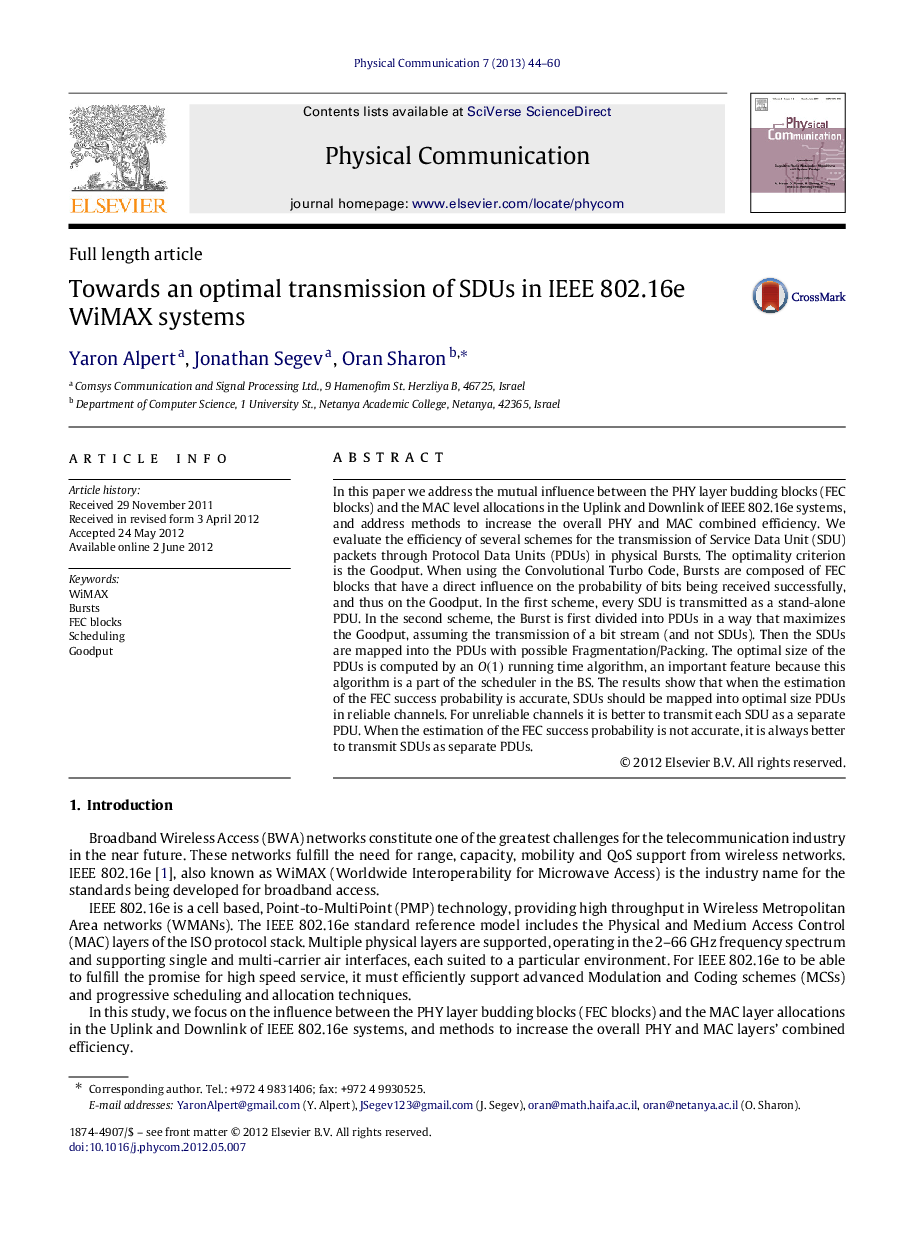| Article ID | Journal | Published Year | Pages | File Type |
|---|---|---|---|---|
| 465127 | Physical Communication | 2013 | 17 Pages |
In this paper we address the mutual influence between the PHY layer budding blocks (FEC blocks) and the MAC level allocations in the Uplink and Downlink of IEEE 802.16e systems, and address methods to increase the overall PHY and MAC combined efficiency. We evaluate the efficiency of several schemes for the transmission of Service Data Unit (SDU) packets through Protocol Data Units (PDUs) in physical Bursts. The optimality criterion is the Goodput. When using the Convolutional Turbo Code, Bursts are composed of FEC blocks that have a direct influence on the probability of bits being received successfully, and thus on the Goodput. In the first scheme, every SDU is transmitted as a stand-alone PDU. In the second scheme, the Burst is first divided into PDUs in a way that maximizes the Goodput, assuming the transmission of a bit stream (and not SDUs). Then the SDUs are mapped into the PDUs with possible Fragmentation/Packing. The optimal size of the PDUs is computed by an O(1)O(1) running time algorithm, an important feature because this algorithm is a part of the scheduler in the BS. The results show that when the estimation of the FEC success probability is accurate, SDUs should be mapped into optimal size PDUs in reliable channels. For unreliable channels it is better to transmit each SDU as a separate PDU. When the estimation of the FEC success probability is not accurate, it is always better to transmit SDUs as separate PDUs.
